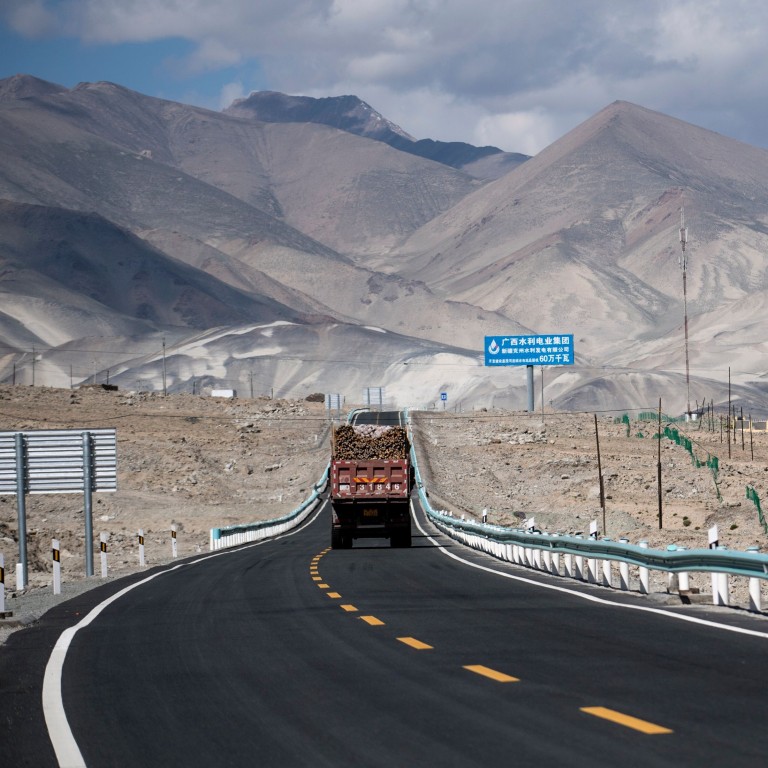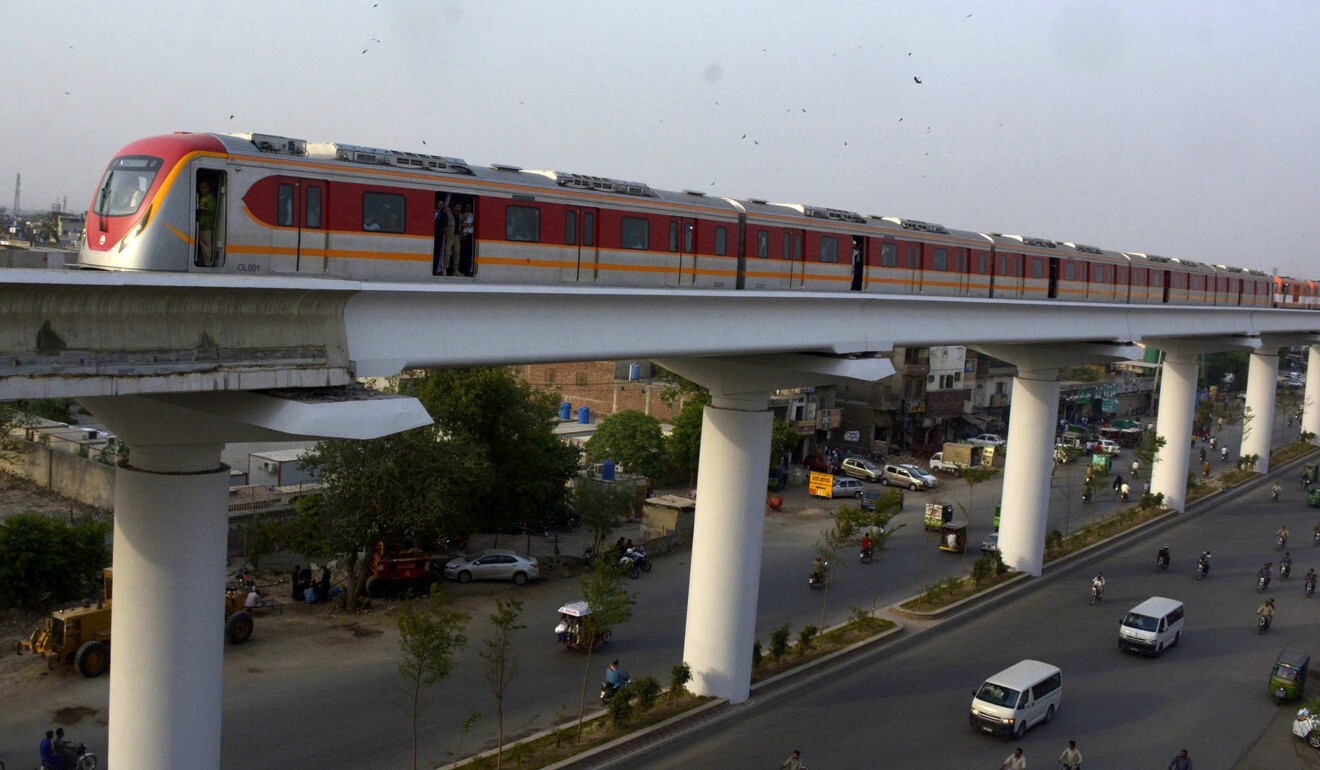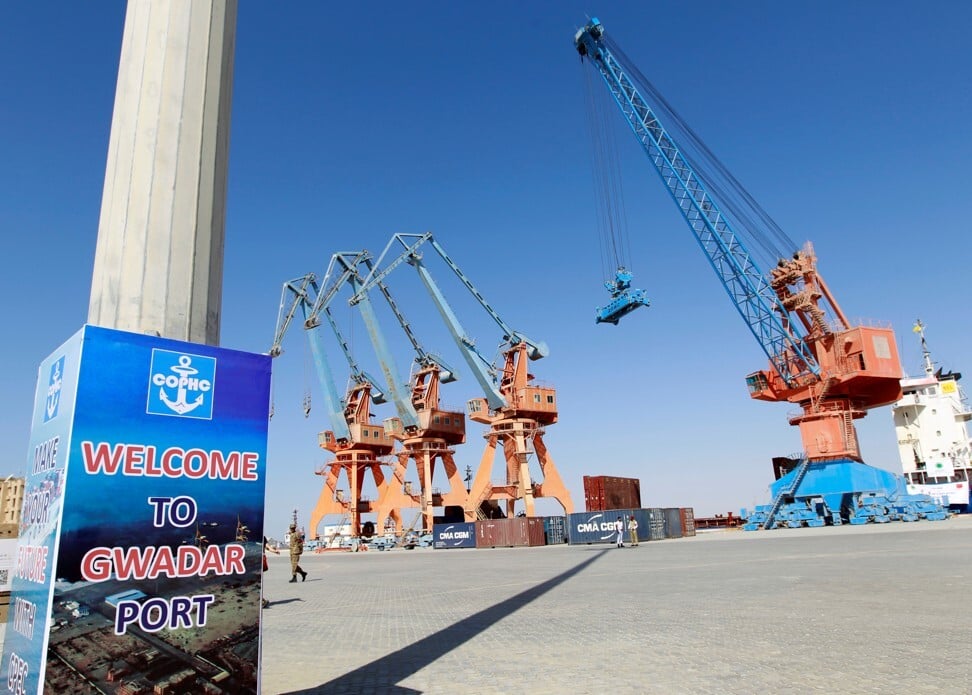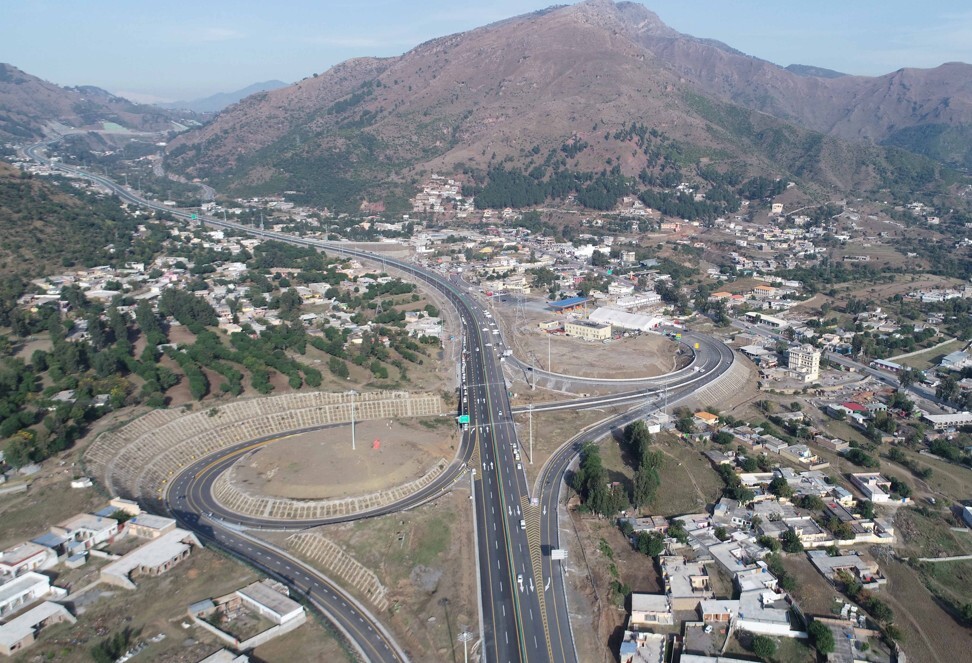
As coronavirus bites, Pakistan looks to China for belt and road economic boost
- Projects including a dam, airport and motorway are being finalised in the China-Pakistan Economic Corridor, ahead of a visit by President Xi Jinping
- Prime Minister Imran Khan is keen to generate jobs for the country’s workers, 25 million of whom have been rendered jobless during the pandemic
According to recent statements by Pakistan’s CPEC Authority, which was established during Khan’s visit to Beijing last October, officials are close to wrapping up the “action plan” for the estimated US$8 billion ML-1 project to rehabilitate Pakistan’s rickety railway network.
It would be the single largest project of the CPEC, the first phase of which saw a collective US$19 billion of Chinese credit and investment poured into energy, motorway and other projects, said Chinese ambassador Yao Jing at a conference last year.
Asim Saeed Bajwa, the retired three-star general appointed as founding chairman of the CPEC Authority, said last month he expected to soon sign an agreement with the China Three Gorges Corp for the US$2.5 billion Kohala hydropower project, which would generate 1,124 megawatts of electricity.
Andrew Small, author of the China-Pakistan Axis, said in the lead-up to Xi’s visit – which earlier this year was said to be happening in July – there had been a push from China and Pakistan to put together “a decent new package of projects, and also to ensure that any elements of the phase-one plans that had been stalled were pushed forward”.
The political stakes had been raised since CPEC was dragged into the “informational war” which erupted between Beijing and Washington last year, said Small, a Brussels-based senior fellow at the German Marshall Fund, a US think tank.
“Given the scrutiny that any visit from Xi would bring, and the need to convey a narrative of progress and success, there would always have been an effort of this sort,” he said.
China’s belt and road: after the gold rush, Pakistan sees the downside
After taking office in August 2018, Khan’s administration trimmed the overall size of CPEC to US$50 billion, from US$64 billion under his predecessor Nawaz Sharif, as part of efforts to counter a payments crisis brought on, in part, by the inability of Pakistan’s narrow economy to absorb a massive influx of Chinese plant and machinery imports under CPEC.
Khan’s government also switched the focus of the CPEC away from big-ticket infrastructure projects to dedicated manufacturing zones, agriculture and social sector development.
As austerity bit, Pakistan’s economy skidded to a grinding halt in the 2018-19 financial year, Khan’s first year in power. GDP growth fell to 1.9 per cent, from 5.8 per cent the year before, according to revised government figures issued on Monday. That is substantially less than the provisional estimate of 3.3 per cent GDP growth issued by the government last June.

The plunging economy has prompted a rethink by Khan, who is desperate to quickly create jobs for Pakistan’s youthful population of 208 million, which has a median age of 22.
Khan has prioritised the revival of the labour-intensive construction sector, and has introduced tax breaks to encourage investment in housing, backed by a promise not to ask questions about the source of investment – a major departure from his government’s accountability-driven political agenda.
He has launched a renewed push for infrastructure projects because they would revitalise associated domestic industries like cement, rerolled steel and aggregates, and incentivise fresh investment in the key job-generating manufacturing sector.
China’s US$62 billion project in Pakistan may become corridor to nowhere
On May 14, Power China and the Frontier Works Organisation, a commercial arm of Pakistan’s powerful military, were awarded a US$2.75 billion contract to build the reservoir and other early infrastructure of the Diamer-Bhasha Dam, envisaged as Pakistan’s third such major project. With a 70 per cent stake, Power China has arranged credit for the project, but the terms have not been made public.
It is being executed as a Pakistan government project, rather than as part of the CPEC. An earlier Chinese proposal to include it in CPEC fell through because of national security concerns about Beijing controlling the flow of the Indus River, the lifeblood of Pakistan’s agriculture sector.
An Islamabad-based expert, who works closely with the Chinese and Pakistani governments to promote cooperation between the “iron brothers”, said that the CPEC would be key to reviving Pakistan’s moribund economy, which could face another one year of recession at least, according to forecasts by multilateral institutions and ratings agencies.

“As the world braces itself for a 2008-like or worse recession, we see a renewed importance of CPEC projects in Pakistan, as it emerges as an island of prosperity that provides hope, jobs and tangible foreign direct investment in a sea of economic uncertainty,” said Mustafa Hyder Sayed, executive director of the Pakistan-China Institute.
“The contrast between the US and China is stark,” Sayed said. “And China is, thanks to Trump, assuming global leadership by standing up and being counted, which in the pre-Covid and pre-Trump period, would have always been the role of the US.” ■
Help us understand what you are interested in so that we can improve SCMP and provide a better experience for you. We would like to invite you to take this five-minute survey on how you engage with SCMP and the news.



